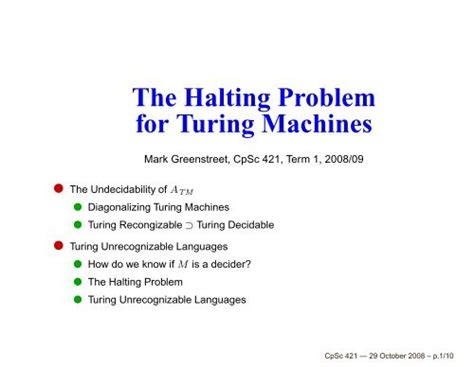The question of whether Alan Turing indeed proved the undecidability of the halting problem has sparked renewed interest among academics and technologists. Crucially, this debate stems from Turing’s original method of addressing problems of computability and the terminological distinctions that have evolved since his 1936 paper. While Turing did not explicitly use the term ‘halting problem,’ his exploration into whether a machine will print specific symbols laid the groundwork for what we now understand as the halting problem. Modern interpretations of Turing’s work reflect how definitions and terms develop over time, resulting in varied interpretations and often leading to deeper understanding or sometimes confusion within the community.
One of the most compelling aspects of Turing’s research was his insight into what we now describe as ‘computable numbers.’ His work focused on distinguishing between operations that a machine can definitively complete and those that inherently lack such guarantees. The contemporary understanding of the halting problem, hinging on whether an arbitrary program will terminate or run indefinitely, builds on Turing’s foundational ideas. Yet, Turing framed the problem in terms of whether a machine prints an infinite sequence of symbols—a definition subtly distinct but computationally equivalent to our modern ‘halting’ terminology.
A valuable point raised in the academic community concerns the formalization of terms and their implications. For example, one commenter refers to the simple fact that concepts Turing discussed—like ‘circularity’—are equivalent to today’s ‘halting problem.’ To Turing, a machine was ‘circular’ if it produced only a finite output. This formulation essentially captures the essence of the halting problem, albeit through different terminology. The historical context underlines the significance of how researchers frame their work, impacting future interpretations and conceptual clarity.
The implications of Turing’s work extend far beyond theoretical computer science, influencing modern computational practices and formal verification methods. Tools like Lean and proof assistants integrate these theoretical underpinnings to perform rigorous formal verification. They aim to assert the correctness of programs by analyzing all possible states a program might enter. Languages like Idris, which only accept programs guaranteed to terminate, echo Turing’s wish to distinguish computationally feasible problems from those that are not. However, as some critiques highlight, while we can design specific programs with these guarantees, the halting problem illustrates the impossibility of a general solution that applies universally.
Reflecting on Rice’s theorem further amplifies the underlying complexity of determining program properties. Rice’s theorem contends that all non-trivial semantic properties of programs are undecidable. This theorem aligns with the halting problem, showcasing the breadth of challenges in program analysis. Essentially, the crux of these discussions lies in acknowledging that while specific instances of program behavior might be determinable, there isn’t a universal method to apply to all possible programs. This nuance echoes across formal verification and programming language design.
Adding another layer to this discourse is the discussion about quantum computing. Some argue that quantum processors could theoretically decide whether a problem halts, challenging classical limitations. Yet, this is met with skepticism by others who assert that quantum computers, despite their potential for exponential speedups, are fundamentally bound by the same constraints as classical machines, especially in computing unsolvable problems like halting.
Critical to advancing this dialogue is the importance of historically informed interpretations. Revisiting Turing’s original work with modern computational theories enriches our understanding and highlights the advances since his epoch-defining research. As computational capacities expand, so does the potential for solving increasingly complex problems, yet the foundational hurdles Turing identified remind us of the boundaries within which technology operates. Ultimately, Turing’s pioneering insights continue to inspire and challenge researchers, perpetually driving the frontier of computational theory forward.


Leave a Reply